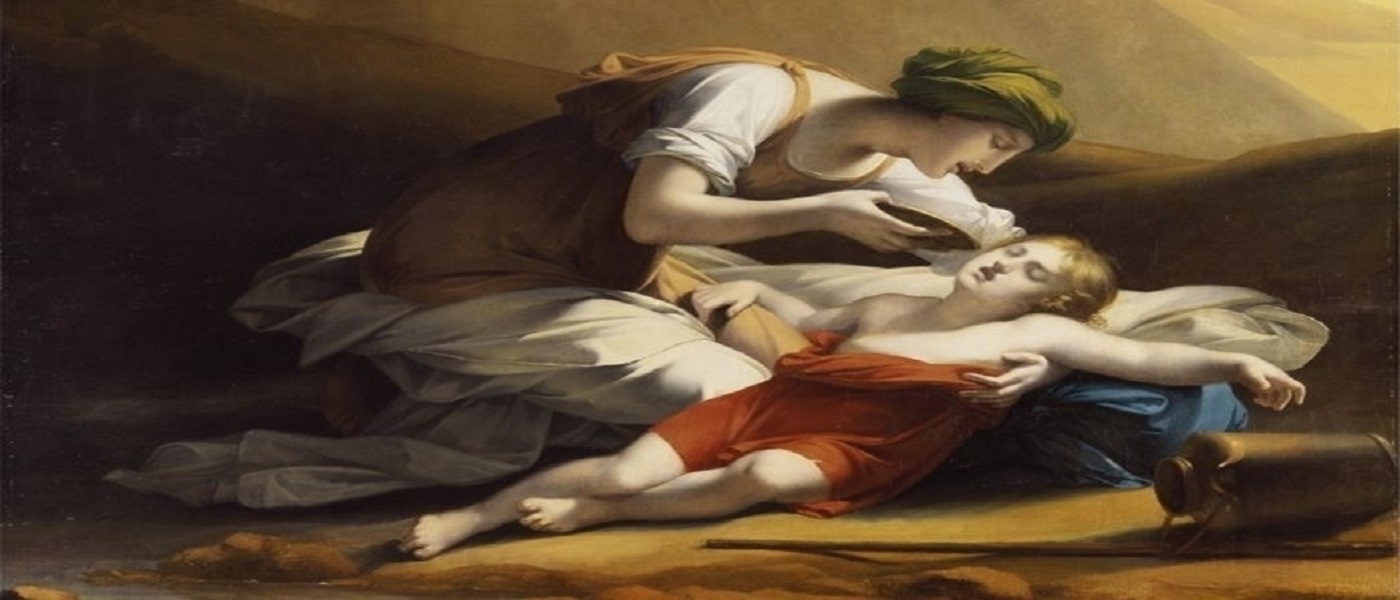

Are Muslims Allowed to Dance?
Dancing is a natural behavior in many cultures; a way of showing happiness or sometimes sadness. In a theory raised by me! the release of energy by moving our body is dancing. But in a theory raised by a scholar "dance refers to a rhythmic movement of the body, usually for entertainment" [1]. Now, let us take both of these definitions into consideration and see what kind of dancing in Islam is forbidden (Haram).
The General Ruling of Dancing in Islam
In the view of some Islamic scholars, it is not permissible for women to dance anywhere in any ceremony irrespective of whether it is a wedding or a birthday ceremony except for a woman's dancing for her husband.
In expanding the above ruling, it has been said that “there is no problem in dancing in itself. However, if dancing entails sexual excitation or committing a forbidden (Haram) act like listening to forbidden (Haram) music, or it is in the presence of non-mahram men, it is forbidden (Haram). And it does not make a difference as to the various types of music. Generally speaking, if dancing is done in a sexually exciting manner, and lead to the commission of a forbidden act, or involves a bad effect, or if it is happening in front of a non-Mahram it is forbidden (Haram)” [3].
If a woman dances for her husband or vice-versa, and the dancing is not accompanied by a forbidden (Haram) act, there is no problem in it [4].
Dancing in Mixed Parties
In mixed parties where men and women are sitting together, the dance of men or women in front of others is forbidden. Some think that it is OK if men dance in front of women. But in fact, it is forbidden (Haram) for a man to dance. Dance of women in front of men and any dancing which may entail a bad effect and arousal of sexual desires are forbidden (Haram). Playing music and listening to it is also unlawful (Haram) if it is done in a lahwi, enrapturing manner.
No matter if men or women who are dancing together or in front of others are of their unmarriageable kin (maḥrams) of the opposite sex. What is forbidden about dancing is general, i.e., regardless of whether it is done by a man, a woman, or in the presence of one’s marriageable kin (non-maḥram) or unmarriageable kin (maḥram) [5].
Women Dancing for Women in Small Parties, Friendly Gatherings, and Weddings
Dance of women for women is permitted (Halal) if it is not done in a sexually exciting manner and does not lead to the commission of a forbidden act, nor entails a bad effect. However, it is forbidden (Haram) to attend a dance party if it is considered as accepting the forbidden (Haram) act of others or leads to committing a forbidden (Haram) act. Otherwise, there is no harm in it. Dance of a woman for other women is forbidden if her husband does not allow her to do so.
Some people think that the rulings of dancing do not apply to wedding parties as it is just one happy night. But there is no difference between a wedding party and other occasions. Dancing with music is forbidden (Haram) [6].
In the case of wedding parties, the dance of women in front of women is not forbidden (Haram) under the conditions mentioned above.
Men Dancing for Men in Separate Parties or Weddings
As mentioned before, by obligatory caution, it is forbidden (Haram) for men to dance.
Dancing for fitness/ Aerobics and other sports with music
Here we discuss the point of releasing energy by moving the body. Is it forbidden (Haram)?
If the movements of the body do not meet the criteria of forbidden (Haram) dance, and if it is not accompanied by forbidden (Haram) music, there is no problem in dancing in private or in groups of women for fitness. However, we have to make sure that such dancing is not happening in front of CCTV cameras or filmed by people who may show it to non-mahrams.
Aerobics and other sports that are based on rhythmic music are permissible if the music is not forbidden (Haram). If music does not cause ecstasy, there is no objection to it. The duty-bound (mukallaf) himself should distinguish whether the music is lahwi or not [7].
Dance Teaching Centers
Establishing centers for teaching and promoting dancing goes against the objectives of the Islamic system and it is impermissible by obligatory caution [8].
References:
- Sayyid Mujtaba Husseini, Questions and Answers by Students (Rules regarding Music), pg. 84
- Ayatullah Makarem-Shirazi, jurisprudential expressions, http://portal.anhar.ir/node/409#gsc.tab=0
- Sayyid Mas'ud Ma'sumi, Rules regarding Man-Woman Relationships, pg. 219
- Tawzih al-Masail (with annotations by Imam Khomeini), vol.2, pg. 970
- Dancing
- dance in Islam
- Dance
- Dance infront of non Mahrams
Share This Article

What Does Islam Say About Racism? part1
Racism and ethnocentrism are closely linked to the sense of superiority that lies within every human being. This issue has a long history - as long as human life, and is still an ongoing behavior that causes serious problems among human beings.
Racism is an important issue that Islam has considered; the issue whose history dates back to nations existed long before the birth of Prophet Muhammad (PBUH&HP). This unequal treatment was so weaved into people’s lives which they didn’t even realized its vile nature. Prophet Muhammad (PBUH&HP), also, lived in a society where racism was very common. The situation became even harder when people started to follow the religion of Prophet Muhammad (PBUH&HP). That was when racism out of tribal prejudice was extended to segregation based on religion, and many people who followed Prophet Muhammad (PBUH&HP) were driven from their homes or hometowns.
The specific conditions of the era in which Prophet Muhammad (PBUH&HP) lived, as well as the deep roots of this wrong attitude in the history of humankind, were the main reasons why Allah (SWT) makes many recommendations about racism in the Quran. The Prophet of Islam (PBUH&HP), also, worked really hard to clear the minds of people from tribal, religious, and any other types of racism.
What does the Quran and Prophet Muhammad (PBUH&HP) say about Racism?
During the Arab ignorance, privileges such as lineage, race, wealth, number of children, and affiliation with a powerful tribe were considered the criteria of superiority over others. The verses of the Quran indicate that the number of children and folks were so important to them that in some arguments they even went to a cemetery and started to count the number of their dead ones:
“Rivalry [and vainglory] distracted you until you visited [even] the graves.” (102: 1-2)
It should have been hard for people of that mindset to accept that their lineage, children, tribe and wealth is of no importance in the eyes of Prophet Muhammad (PBUH&HP). According to an account, he said, “All the people, from the past or at present, are as equal as a comb’s teeth; therefore neither Arabs are superior to non-Arabs, nor white people to blacks. You are only distinguished by your piety and righteousness” [1].
However, although the Quran was revealed in such an environment that was limited in various ways and had a limited connection with the world outside the island, and the issue of ethnicity, race, and tribal life prevailed in all its aspects, it did not take on such a color at all. Allah addresses people in the Quran using the following phrases: "O children of Adam," "O people," "O you who believe," or "O you who have faith." The Quran removed racial privileges in that racist environment, and with the beautiful logic of "you are all children of man and were created from one parent," Allah declared them all brothers and sisters belonging to the same family:
“O mankind! Indeed, We created you from a male and a female and made you nations and tribes that you may identify yourselves with one another. Indeed the noblest of you in the sight of Allah is the most God wary among you. Indeed Allah is all-knowing, all aware.” (49:13)
As the verse above implies, One’s character and status are only measured by the level of submission to Allah and following His commands, not social or financial conditions.

Religious Discrimination
Apart from racism based on lineage, race, wealth, etc. people before and at the time of Prophet Muhammad (PBUH&HP) believed that religious beliefs gave them superiority over others.
Based on that belief, people of different faiths were always conflicting with each other, instead of having sound arguments about different issues. Therefore, religious discriminations had been severely condemned by Islam, emphasizing that belonging to the followers of religion does not make people good or bad. But, it is their actions and their level of obedience toward Allah that give them superiority:
“The Jews say, ‘The Christians stand on nothing,’ and the Christians say, ‘The Jews stand on nothing,’ though they follow the [same] Book. So said those who had no knowledge, [words] similar to what they say. Allah will judge between them on the Day of Resurrection concerning that about which they used to differ.” (2: 113)
The Quran on sexism
The issue of fairness and justice among human beings is so important in Islam that the Quran has taken care of all different aspects in which people may act unjustly toward each other. Apart from racial issues that have been ongoing for ages, the issue of undermining and suppressing women in different domestic and social aspects, and depriving them of their rights had been a challenging issue in most parts of the world.
The Quran condemns this segregation and states that men and women are equal in the eyes of Allah:
“Whoever acts righteously, [whether] male or female, should he be faithful, We shall revive him with a good life and pay them their reward by the best of what they used to do.” (16:97)
Also, the necessity of observing women’s rights had been emphasized in many narrations from Prophet Muhammad (PBUH&HP) and his progeny. Imam Ali (AS), says in an account, “Women are Allah’s trusts upon you, do not hurt them, and do not put pressure on them” [2]. Therefore, men should be careful with their manners in treating women whether in family or in society.
To conclude, the only thing that gives superiority to people is their piety and faith. Looking at the issue like this makes people closer to each other and all differences in color, race, ethnicity, shape, wealth, etc. create no distance between people. People gather around based on their spiritual interests and try not to judge each other, since the only one who is aware of the most faithful is Allah (SWT):
“… And be wary of Allah. Indeed Allah knows best what is in the hearts.” (5: 7).
References:
- Al-Shaykh Al-Mufid, Al-Ikhtisas, p.341.
- Muhaddith Nuri ,Mustadrak al-Wasail, vol.2, p.551.
Read More

Hagar: A Traveller to Allah
Hagar, who left behind a sainted child that later became the forefather of the Holy Prophet Muhammad (PBUH&HP), is the symbol of a devoted and obedient woman to God. Although her name is not directly mentioned in the Quran, in many Islamic quotes (hadiths) she is known as an example of faith in Allah that makes her a role model for every Muslim.
Ishmael (AS)’s Birth
Being barren, Sarah the prophet Abraham(AS)’s wife, told him to marry her housemaid, Hagar, as a second wife. After Hagar gave birth to a blessed child, Ishmael (AS), Allah ordered Abraham (AS) to emigrate from Egypt to Mecca with Hagar and infant Ishmael (AS).
With the guidance of Gabriel, they stopped to camp at a bleak, isolated place with a limited supply of food and water. That was the land on which the Kaaba was later built. Soon after this, Abraham (AS) received another command from Allah to leave his beloved wife and child behind in that harsh condition.
Abraham (AS) submitted to the command of Allah and patiently tolerated this separation while praying for them: “Our Lord! I have settled part of my descendants in a barren valley, by Your Sacred House, our Lord, that they may maintain the prayer. So make the hearts of a part of the people fond of them, and provide them with fruits, so that they may give thanks” (14:37).
Hagar's Faith Was Paid
At that time some people would come to Mecca to pray, but no one inhabited there because of the unbearable living conditions[1]. Believing in divine predestination and knowing that God had not forgotten them, Hagar endured the hard conditions until she ran out of food and water.
Seeing her child dying of thirst, she ran to the top of Mount Safa hoping to find some water, but she found nothing. So she continued her search and ran to Mount Marwa instead, again in the hope to find some water. She continued and ran seven times between these two mounts, Safa and Marwa, with faith in divine mercy.
She had such trust in her God that she did not give up searching for water even for a moment. Then, she noticed water bubbling up from somewhere under Ishmael (AS)’s feet. Hagar’s patience and sincere efforts were paid; they survived.
Later on, the place where the water came to the surface was named Zamzam Spring. This act of Hagar became a big sign (called sa’i) for billions of Muslims through the ages, especially during Hajj, reminding them of the pure struggles of a faithful woman and the subsequent Divine Favour [1]. Hagar showed a deep sincerity to God by attesting with certainty that Allah had not abandoned her and her child.
Second Divine Trial For Hagar
After Zamzam water sprang out from the Earth, a tribe who lived in the vicinity of Mecca realized and came to settle there. Abraham (AS)’s prayer was responded to; Hagar and her son were not alone anymore. He came to visit Hagar and Ishmael (AS) time by time. As he knew the capabilities and merits of Hagar, he entrusted the training and education of Ishmael (AS) to her mother.
Some years later when Ishmael (AS) became 13 [2], another divine test awaited him and his parents; Allah ordered Abraham (AS) to sacrifice Ishmael (AS): “When he was old enough to assist in his endeavor, he said," My son! I see in a dream that I am sacrificing you. See what you think." He said," Father! Do whatever you have been commanded. If Allah wishes, you will find me to be patient” (37:102).
The full story is mentioned in the chapter (Surah) Al-Saaffat (verses 102-111) in the Quran. Growing up with the religious teachings of her mother, Ishmael (AS) obeyed Allah’s will. But it was no more than a trial for both Ishmael (AS) and Abraham (AS) in which they succeeded: “This was indeed a manifest test, Then We ransomed him with a great sacrifice, and left for him a good name in posterity” (37: 106-108).
Rested in Peace, Close to the Kaaba
Hagar was buried beside the Holy Kaaba after her demise. Her grave is located in Hijr Ishmael; a crescent-shaped area immediately adjacent to the Kaaba. Every Muslim who performs Hajj is obliged to circumambulate around it; the place where Abraham (AS) had constructed a shelter for Ishmael (AS) and Hagar[3] before he left them in that desert. This is how Allah rewards his sincere obedient believers.
References:
- http://en.rafed.net
- F. H.Tabarsi, "Majma' al-Bayan", vol. 8, p. 321.
- http://www.hawzah.net
Read More

